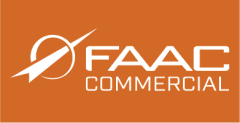Starting Out Right with Simulation Training Technology
Published

No piece of simulation training technology can “fix” a broken training program—or replace one entirely. But the right sim can be a powerful tool for improving any training program. The key to a successful rollout is to start with a clear idea of what “success” looks like.
Establishing a Focused Goal for your Simulation Training Technology
The most successful simulation-enhanced training programs start with a single, discrete focus and goal:
A specific group receives focused training to meet a well-defined goal.
Broadly speaking, there are four ways transit agencies use their simulation training technology:
Recertification – Mandatory, cyclical refresher training that all existing operators must attend in order to maintain their qualification as drivers. This group of operators has a solid grasp of the fundamentals, but still benefit from practice and a safe environment that can allow them to test those skills against any mix of conditions (poor visibility, slick roads, distracted road-users, etc.)
Remedial – Mandatory corrective training for operators following a collision or serious incident. This may also include preventative action for operators who may be struggling (i.e., clipping mirrors, hard braking, etc.) to hone skills.
Requalification – Requalifying experienced operators who are returning after a prolonged absence. They broadly know what they’re doing, but may be a little rusty in certain skills, or wish to confirm that their situational awareness/customer service skills are sharp.
Basic Training — Initial training for new hires and existing employees with no experience operating a transit vehicle in revenue service. Teaching fundamentals is an area where sims excel.
Although a good sim can be used for all of these, it’s important to introduce your simulator to your program by choosing just one. Identify the group you’ll work with, and set a concrete, measurable goal with a timeline. For example, “Reduce mirror strikes by X percent over the next calendar year” or “Increase training throughput to Y operators per Z weeks before the end of 2023.”
Selecting a Sim to Meet Initial and Long-Term Goals
While any quality simulator can improve a training program, your initial vision of “success” should inform your purchasing decision. For example, it is common for agencies who are looking to evolve their corrective action program to explore using simulation training technology. If this is your initial use, then you’re going to want a bus simulator that makes it easy to program your own scripted training scenarios, since the best way to rehabilitate a struggling driver is to precisely model those factors, unique to your routes or community, which are troubling them.
Other agencies purchase their first sim primarily looking to increase throughput and reduce wash-out rates in new hire training. Training more operators, quicker, is an excellent use of a simulator because it allows for both quick repeats of specific tasks and eliminates all risks to equipment and the public. This is especially good for working on some of the fundamentals that most often trip up and frustrate new operators: pivot point comprehension, backing, and issues around the proper front/side clearances, lane placement, and ‘covering’ the right.
Programmable scripted scenarios are still important in this situation—but you don’t want to have to program every basic skill. Look for a sim that comes with a full library of “essentials.”
Ongoing Technical Support
No piece of simulator training technology can be a “universal bandage” for an underperforming training program. But a simulator can be a remarkably powerful tool for any training program—provided it’s properly integrated into a program that also includes seat time in the actual vehicle. If you don’t have the in-house expertise to build these types of training programs then you should be looking for a simulator vendor who does.
FAAC is notable for their long history of advancing simulation training technology systems and solutions for mass transit. More than twenty years ago FAAC developed the world’s first immersive bus transit training simulator. (In 2015 this simulator was named among the top 100 safety improvements of the last 150 years by the APTA.) But even more important than that long history of building custom simulators is their long track-record of working closely with every customer to integrate those sims into their existing training regimen.

